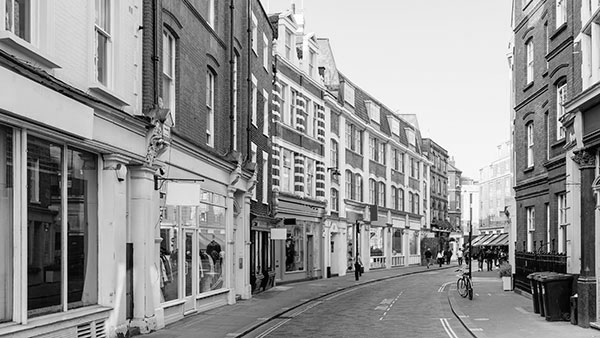Global cities, particularly vulnerable to high levels of Covid-19 infection, have had to adapt rapidly. Charles Critchell FRSA asks why has the urban response of some global cities been more successful than others and, more importantly, what opportunities are available to city authorities to build more equitable global cities in the months and years ahead?
The shock of Covid-19 has been most conspicuous in global cities throughout the world, with notable examples being Wuhan in the east and New York City in the west. This is because global cities are typically denser, better-connected and more diverse than their smaller urban counterparts. Additionally, the need to socially distance, allied with a finite amount of space, has meant that access to urban space is being fiercely contested. The pandemic has necessitated that global cities adapt as city authorities have enforced measures that have altered the rhythms of city life and effectively recalibrated critical infrastructures. This adaptation has typically taken the form of experimentation as city authorities are doing things that they would not ordinarily have done.
The value of experimentation
In response to the need to socially distance, two global cities, Auckland in New Zealand and Bogota in Colombia, have quickly rolled out measures to provide more equitable access to urban space for their residents. Auckland’s use of tactical urbanism – schemes designed to repurpose city streets for pedestrians – has been at the heart of the city’s urban programme for years, while the overnight implementation of cycleways in Bogota is bound to the cultural symbiosis of the city and the cycle. The use of tactical urbanism in Auckland and the implementation of emergency cycleways in Bogota are the result of ‘further’, as opposed to ‘forced’ experimentation. The two cities are essentially continuing to implement measures, which they had both been successfully delivering prior to the outbreak of the pandemic.
Underpinning these measures are the governance structures of both cities, where the actions of decisive leaders has been clearly communicated to their respective city residents. Auckland, the southern hemisphere’s largest unitary authority, has prioritised a collaborative governmental approach, while New Zealand itself has been rated as the top country in the world for its Covid-19 communications. Bogota’s mayor, Claudia Lopez, was able to use her formal authority to lock down the city ahead of the rest of the country, while the city’s long-term pro-cycling policies have meant the use of the cycle was a natural fit for displaced public transport users.
Though many global cities have a mayor, their mandate to govern is often curtailed by forces both above and below them, as has been most apparent in London. At the start of the pandemic, the slow response of the city’s authorities to widen pavements, install emergency cycle lanes and provide consistent guidance on access to green space, can be attributed to the city’s multiple layers of governance and inconsistent messaging. City authorities have since turned to ‘forced experimentation’, namely necessary, but controversial, measures such as those encapsulated in the mayor’s Streetspace plan. While the plan is consistent with government policy, there has been inevitable pushback. This has been most noticeable at local level as some councilors assert that the mayor’s plan goes both too far, and too fast, in acting without the mandate of Londoners.
It is, however, Londoners themselves who have been taking the urban initiative, especially early in the pandemic. The action taken by certain London boroughs, neighbourhood groups and individual residents, including coning off roads and filtering streets, has signaled the emergence of ‘hyper-local’ governance. These interventions have subsequently turned the well-established planning protocol of ‘assess, plan and do’ on its head. While the new paradigm of ‘do, assess and plan’ is very much a product of forced experimentation, perhaps the real question is whether this new paradigm could or should be integral to how we plan our cities for life beyond the pandemic.
Experimentation is empowering
While examples of further experimentation in global cities such as Auckland and Bogota, are seemingly preferable to forced experimentation, as has been apparent in London, there are certainly opportunities open to cities that must quickly adapt. The pandemic has challenged people’s understanding of urban space and has invited them to reimagine how it could be used. This has been especially evident among local communities, which have exhibited the engagement, endeavor and empathy to ensure that urban space is utilised for the wider public good. It is important that city authorities reciprocate and strive to position people at the heart of how cities are designed, and how their streets and spaces are used.
Opening this dialogue is fundamental to supporting the broader need for consistent communication between city authorities and their urban populations. Cultivating a level of trust between city and citizen typically provides a mandate for city authorities to go both further and faster in achieving equitable urban visions. This is important in not only improving the day-to-day lives of city users, but in facilitating greater resilience and certainty in dealing with unprecedented events in the future. Collective implementation of these measures may, therefore, enable city authorities and their residents to co-create more accessible, equitable and sustainable global cities in the months and years ahead.
Charles is the founder of Fare City, a London-based city transport think tank. This article draws on research done as part of its Connecting Continents programme.
Related articles
-
Unsteady foundations
Marwa Al-Sabouni
The importance of the built environment cannot be underestimated; it can make or break cities.
-
-
The Green Corridors Initiative
James Parker FRSA
Being able to easily get out into green spaces shouldn't have to be a privilege




Be the first to write a comment
Comments
Please login to post a comment or reply
Don't have an account? Click here to register.